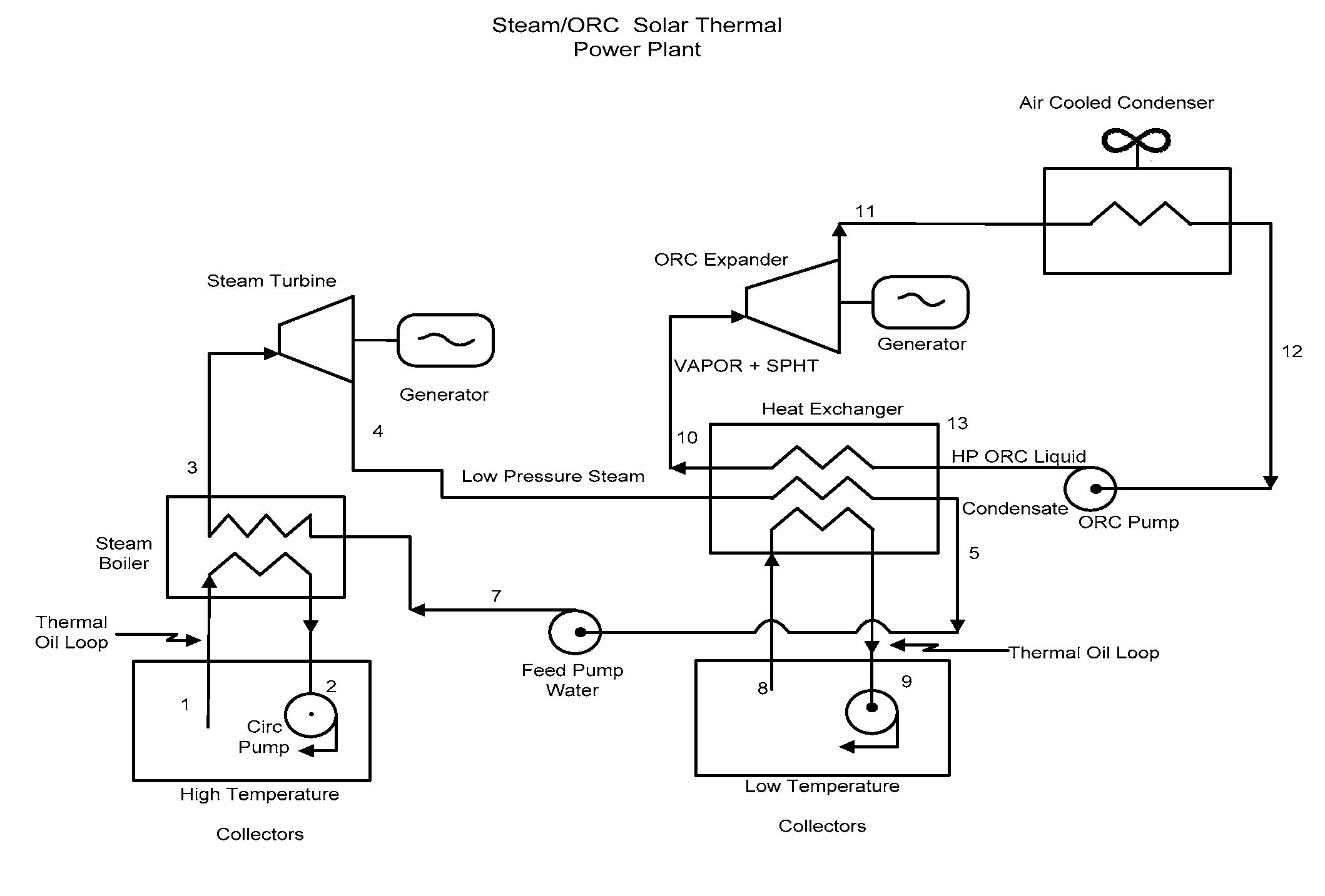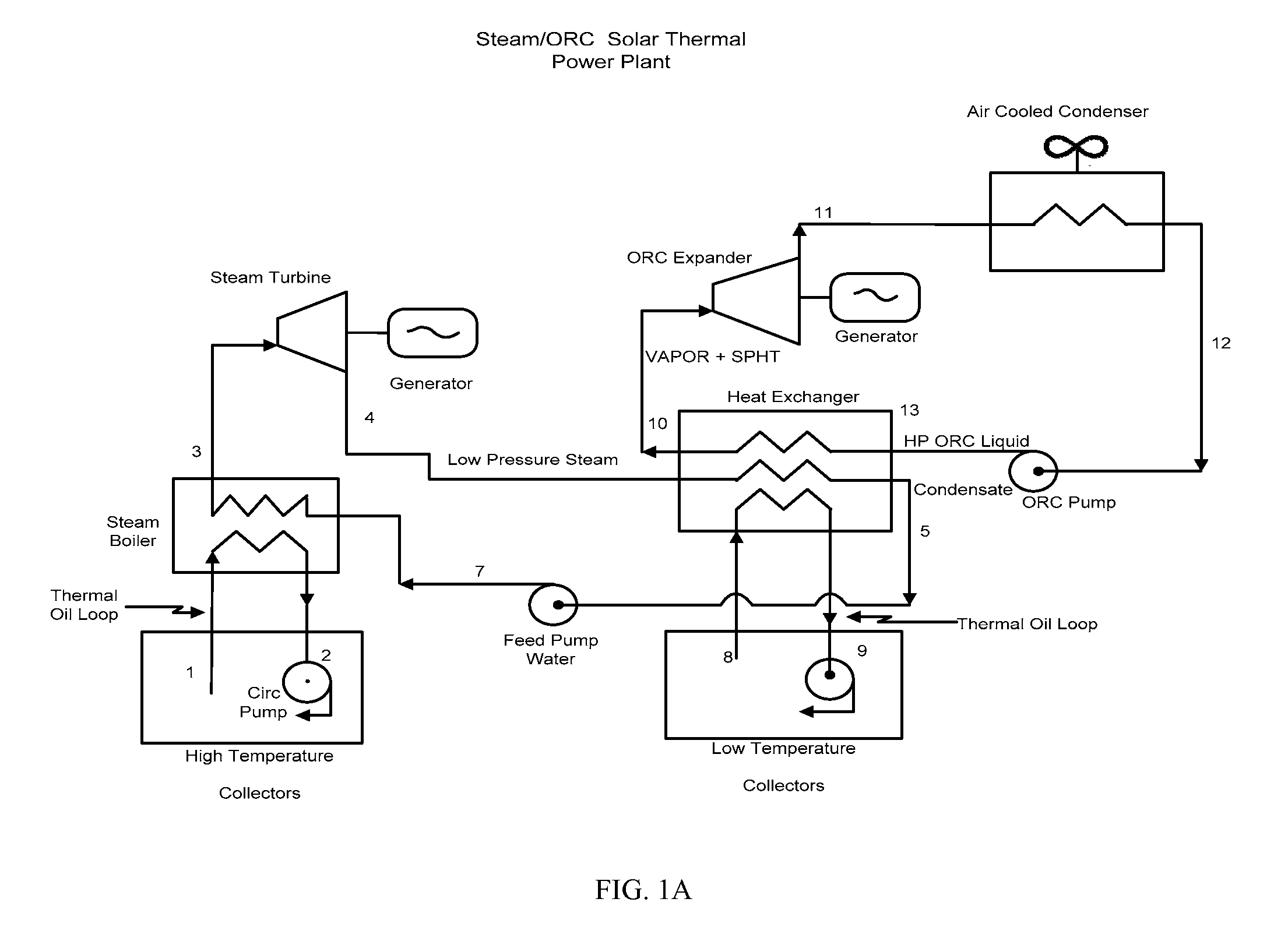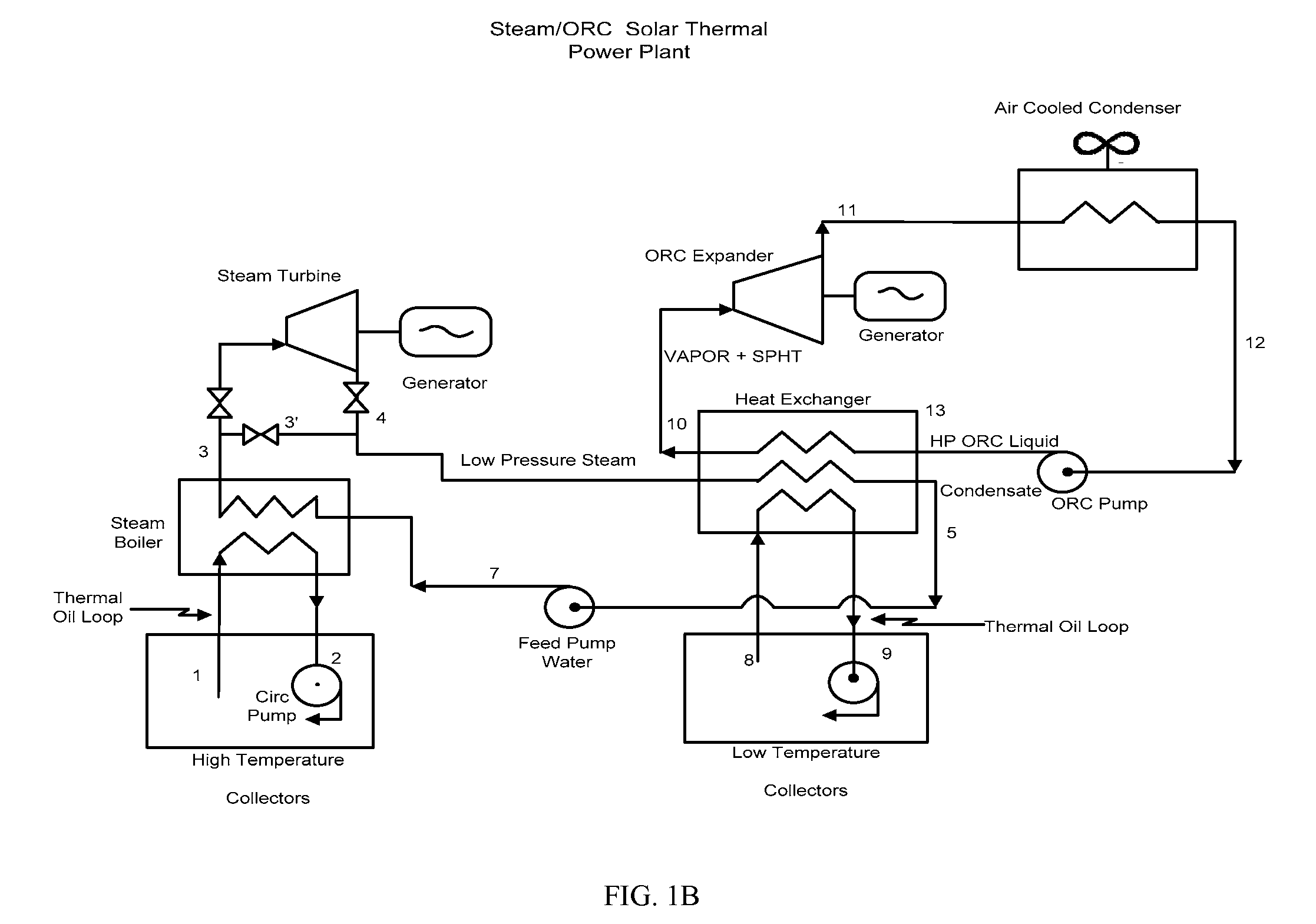Solar thermal power generation using multiple working fluids in a rankine cycle
a technology of solar thermal power generation and working fluids, applied in the direction of steam generation using solar heat, machines/engines, lighting and heating apparatus, etc., can solve the problems of reducing cost effectiveness and/or environmental stewardship, affecting so as to improve the economics of solar thermal generation. , the effect of increasing outpu
- Summary
- Abstract
- Description
- Claims
- Application Information
AI Technical Summary
Benefits of technology
Problems solved by technology
Method used
Image
Examples
Embodiment Construction
[0030]While preferable embodiments of the invention have been shown and described herein, it will be obvious to those skilled in the art that such embodiments are provided by way of example only. Numerous variations, changes, and substitutions will now occur to those skilled in the art without departing from the invention. It should be understood that various alternatives to the embodiments of the invention described herein may be employed in practicing the invention.
[0031]The invention provides thermal solar power generation using multiple working fluids in a Rankine cycle. Prior power plants and energy generation systems include solar collectors that provide heat at the same temperature. From a system thermodynamics consideration, the use of such uniform collectors is sub-optimal and more expensive than necessary. If the temperature of thermal fluid returning to the collector field is much lower (e.g., 300° F.) than the thermal fluid leaving the field, much of the input heat requi...
PUM
 Login to View More
Login to View More Abstract
Description
Claims
Application Information
 Login to View More
Login to View More - R&D
- Intellectual Property
- Life Sciences
- Materials
- Tech Scout
- Unparalleled Data Quality
- Higher Quality Content
- 60% Fewer Hallucinations
Browse by: Latest US Patents, China's latest patents, Technical Efficacy Thesaurus, Application Domain, Technology Topic, Popular Technical Reports.
© 2025 PatSnap. All rights reserved.Legal|Privacy policy|Modern Slavery Act Transparency Statement|Sitemap|About US| Contact US: help@patsnap.com



